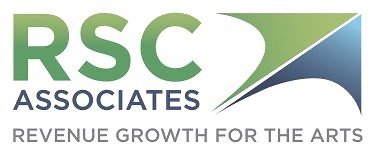IF YOU CAN’T MEASURE IT, YOU CAN’T MANAGE IT
With Bob Swaney
An often overlooked fundamental that separates a successful fundraising program from a stagnant one? Measuring results. Let’s face it—if you can’t measure it, you can’t manage it.
In today’s podcast, we’re focused on why measuring fundraising results is essential, what data points you should be tracking, who should review the information, and how to use that information to make tactical and strategic decisions. All because growth starts with knowing where you stand.
Read the full transcript below or click the button to listen.
FULL TRANSCRIPT OF THE PODCAST
An often-overlooked fundamental that separates a successful fundraising program from a stagnant one? Measuring Results. Let’s face it—if you can’t measure it, you can’t manage it. And you can’t accurately predict where you’re going if you don’t know where you’ve been or how you’ve arrived at where you are.
Fundraising success is measured in metrics, not just in how much money you raise, but also in terms of the number of donors and the average gift size. The key is understanding “why” you raised it, “how” you raised it, and “what” it took to get there. Without measurement, you’re flying blind—making decisions based on intuition rather than facts.
Today, I’m going to focus on the revenue, and we will cover why measuring fundraising results is essential, what data points you should be tracking, who should review the information, and how to use that information to make tactical and strategic decisions. Plus, we’ll go over actionable next steps to help you start or refine your tracking process.
Five Reasons Why Measuring Fundraising Results is Important
Before we dive into the specifics, let’s be clear: fundraising isn’t just about the dollars raised, it’s about the sustainability of your organization. It, therefore, is a “must-have” for institutional viability. If you don’t track what’s happening with your revenue and expenses, you’re not intentionally guiding your program. You’re just reacting.
Arts organizations thrive when they’re proactive, using data to guide their strategies rather than relying on gut instincts. Here’s why taking measurements and analyzing results is non-negotiable.
1. Accountability and Transparency
Arts organizations exist because of generosity—whether from ticket buyers, donors, members, or grantmakers. If you’re not tracking and sharing your financial data, you risk eroding the transparency and trust that makes philanthropy work.
This should convince you: a study by the Nonprofit Finance Fund found that 75% of donors say financial transparency influences their giving decisions.
Why does this matter? When donors and Board members see clear, data-backed reports on fundraising, they’re more likely to deepen their support. Transparency builds confidence, and confidence leads to investment.
Key action: Regularly report on revenue and expenses in Board meetings and donor communications, ensuring clarity and trust.
2. Strategy Refinement
If you don’t measure your efforts, how do you know what’s moving the needle? Are your major gift donors increasing their giving? Are events yielding a good return? If three direct mail waves are good, are four waves better? Without tracking, you can’t really answer.
For example, A regional symphony analyzed past campaigns and found that major gifts from Board members accounted for 30% of annual revenue, so they redirected energy to deepening Board engagement instead of low-performing e-solicitations.
Why does this matter? Data helps you optimize. Maybe your corporate sponsorships aren’t performing well, but your mid-level donor program is growing. Without measurement, you might be spending resources in the wrong places.
Why else does this matter? Tracking this year's pace-to-goal versus last year's pace-to-final (at the same time of year) is vitally important. If momentum is lagging compared to last year, that might be an indicator to change tactics or adjust timing to improve results before year-end.
Key action: Use year-over-year comparisons to identify areas where adjustments in strategy are needed. Look for multi-year trends. Address weaknesses and lean into strengths in results.
3. Efficiency and Cost Control
Measuring fundraising expenses against revenue ensures that every dollar raised is being used effectively. Too often, organizations invest time and money into events that don’t yield real returns.
According to Giving USA, high-performing fundraising teams reinvest 20-30% of their fundraising revenue back into development operations.
Why does this matter? If an annual gala costs 50% of what it raises, is it worth it? Maybe…maybe not. Perhaps those expense resources could be reallocated to major gifts and grant writing. Or, you might find that the “soft benefit” of new donors entering via the gala is worth the added effort.
Key action: Calculate the return on investment (ROI) for each major fundraising category and adjust efforts accordingly. Also, think in terms of money AND time. You’ll need to measure both so you can factor in the ‘efficiency’ of various opportunities.
4. Improved Donor Retention
Retaining donors is far more cost-effective than acquiring new ones. Tracking donor retention and engagement rates allows you to fine-tune stewardship strategies.
Nonprofits that improve donor retention by just 10% can increase fundraising revenue by 50% over time (Fidelity Charitable).
Why does this matter? If you notice a drop in renewal rates, you can intervene with personal outreach, events, or recognition efforts before donors lapse.
Key action: Monitor donor retention rates monthly and implement strategic outreach to lapsed donors.
5. Long-Term Sustainability
Revenue trends over time reveal vulnerabilities, whether it’s over-reliance on a few major donors or an unsustainable cost structure.
For example, A ballet company found that 80% of its funding came from just 10 donors. With that insight, they built a mid-level giving program to diversify support.
Why does this matter? A well-balanced revenue stream makes an organization more resilient to economic downturns and leadership transitions.
Key action: Use tracking data to inform long-term fundraising planning and campaign development.
If you remember just one thing, make it this…
Your fundraising program isn’t just about money coming in—it’s about understanding what works, why it works, and how measuring results can help you make smarter decisions about your fundraising program. Growth starts with knowing where you stand.



